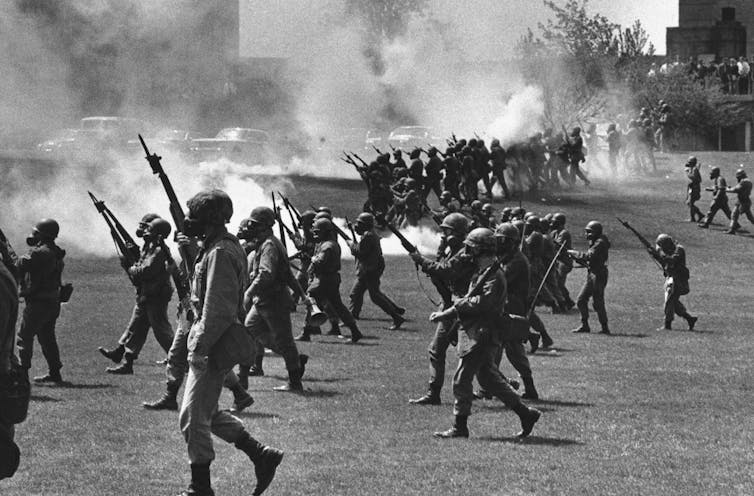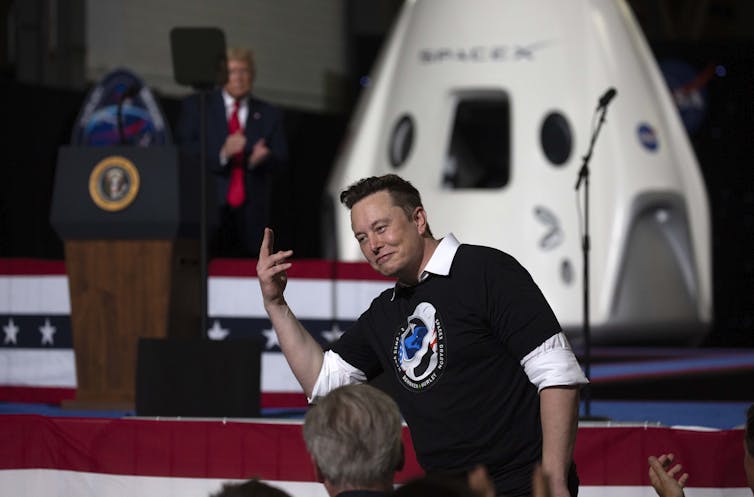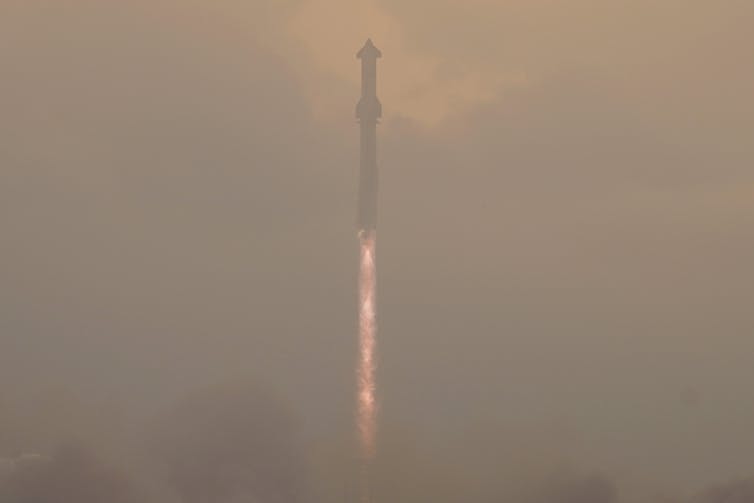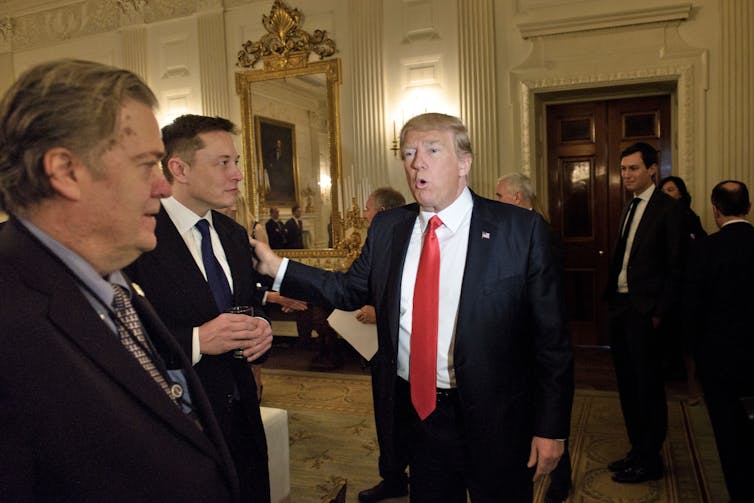
Republican presidential candidate Donald Trump has expressed his intention, if elected to a second term, to use the U.S. armed forces to suppress domestic protests. The New York Times reports that Trump’s allies are marshaling legal arguments to justify using National Guard or active-duty military troops for crowd control.
Moreover, as the Times notes, Trump has asserted that if he returns to the White House, he will dispatch such forces without waiting for state or local officials to request such assistance.
I am a historian who has written several books about the Vietnam War, one of the most divisive episodes in our nation’s past. My new book, “Kent State: An American Tragedy,” examines a historic clash on May 4, 1970, between anti-war protesters and National Guard troops at Kent State University in Ohio.
The confrontation escalated into violence: Troops opened fire on the demonstrators, killing four students and wounding nine others, including one who was paralyzed for life.
In my view, the prospect of dispatching troops in the way that Trump proposes chillingly echoes actions that led up to the Kent State shootings. Some active-duty units, as well as National Guard troops, are trained today to respond to riots and violent protests – but their primary mission is still to fight, kill, and win wars.
Federalizing the Guard
The National Guard is a force of state militias under the command of governors. It can be federalized by the president during times of national emergency or for deployment on combat missions overseas. Guardsmen train for one weekend per month and two weeks every summer.
Typically, the Guard has been deployed to deal with natural disasters and support local police responses to urban unrest, such as riots in Detroit in 1967, Washington in 1968, Los Angeles in 1965 and 1992, and Minneapolis and other cities in 2020 after the death of George Floyd.
The 1807 Insurrection Act grants presidents authority to use active-duty troops or National Guard forces to restore order within the United States. However, presidents rarely deploy Guard troops without state governors’ consent.
The main modern exceptions occurred during the Civil Rights Movement, when Southern governors resisted federal orders to desegregate schools in Arkansas, Mississippi and Alabama. In each case, the troops were sent to protect Black students from crowds of white protesters.
The standoff at Kent State
The war in Vietnam had grown increasingly unpopular by early 1970, but protests intensified on April 30 when President Richard Nixon authorized expanding the conflict into Cambodia. At Kent State, after a noontime anti-war rally on campus on May 1, alcohol-fueled students harassed passing motorists in town and smashed storefront windows that night. On May 2, anti-war protesters set fire to the building where military officers trained Kent State students enrolled in the armed forces’ Reserve Officer Training Corps program.
In response, Republican Gov. Jim Rhodes dispatched National Guard troops, against the advice of university and many local officials, who understood the mood in the town of Kent and on campus far better than Rhodes did. County prosecutor Ron Kane had vehemently warned Rhodes that deploying the National Guard could spark conflict and lead to fatalities.
Nonetheless, Rhodes – who was trailing in an impending Republican primary for a U.S. Senate seat – struck the pose of a take-charge leader who wasn’t going to be pushed around by a long-haired rabble. “We’re going to put a stop to this!” he shouted, pounding the table at a press conference in Kent on May 3.
Hundreds of National Guard troops were deployed across town and on campus. University officials announced that further rallies were banned. Nonetheless, on May 4, some 2,000 to 3,000 students gathered on the campus Commons for another anti-war rally. They were met by 96 National Guardsmen, led by eight officers.
There was an edge of confrontation in the air as student anger over Nixon’s expansion of the war blended with resentment over the Guard’s presence. Protesters chanted antiwar slogans, shouted epithets at the Guardsmen and made obscene gestures.
‘Fire in the air!’
The Guardsmen sent to Kent State had no training in de-escalating tension or minimizing the use of force. Nonetheless, their commanding officer that day, Ohio Army National Guard Assistant Adjutant General Robert Canterbury, decided to use them to break up what the Department of Justice later deemed a legal assembly.
In my view, it was a reckless judgment that inflamed an already volatile situation. Students started showering the greatly outnumbered Guardsmen with rocks and other objects. In violation of Ohio Army National Guard regulations, Canterbury neglected to warn the students that the Guardsmens’ rifles were loaded with live ammunition.
As tension mounted, Canterbury failed to adequately supervise his increasingly fearful troops – a cardinal responsibility of the commanding officer on the scene. This fundamental failure of leadership increased confusion and resulted in a breakdown of fire control discipline – officers’ responsibility to maintain tight control over their troops’ discharge of weapons.
When protesters neared the Guardsmen, platoon sergeant Mathew McManus shouted “Fire in the air!” in a desperate attempt to prevent bloodshed. McManus intended for troops to shoot above the students’ heads to warn them off. But some Guardsmen, wearing gas masks that made it hard to hear amid the noise and confusion, only heard or reacted to the first word of McManus’ order, and fired at the students.
The troops had not been trained to fire warning shots, which was contrary to National Guard regulations. And McManus had no authority to issue an order to fire if officers were nearby, as they were.
Many National Guardsmen who were at Kent State on May 4 later questioned why they had been deployed there. “Loaded rifles and fixed bayonets are pretty harsh solutions for students exercising free speech on an American campus,” one of them told an oral history interviewer. Another plaintively asked me in a 2023 interview, “Why would you put soldiers trained to kill on a university campus to serve a police function?”
A fighting force
National Guard equipment and training have improved significantly in the decades since Kent State. But Guardsmen are still troops who are fundamentally trained to fight, not to control crowds. In 2020, then-National Guard Bureau Chief General Joseph Lengyel told reporters that “the civil unrest mission is one of the most difficult and dangerous missions … in our domestic portfolio.”
In my view, the tragedy of Kent State shows how critical it is for authorities to be thoughtful in responding to protests, and extremely cautious in deploying military troops to deal with them. Force is inherently unpredictable, often uncontrollable, and can lead to fatal mistakes and lasting human suffering. And while protests sometimes break rules, they may not be disruptive or harmful enough to merit responding with force.
Aggressive displays of force often heighten tensions and worsen situations. Conversely, research shows that if protesters perceive authorities are behaving with restraint and treating them with respect, they are more likely to remain nonviolent. The shooting at Kent State demonstrates why force should be an absolute last resort in dealing with protests – and one fraught with grave risks.![]()
Brian VanDeMark, Professor of History, United States Naval Academy
This article is republished from The Conversation under a Creative Commons license.



